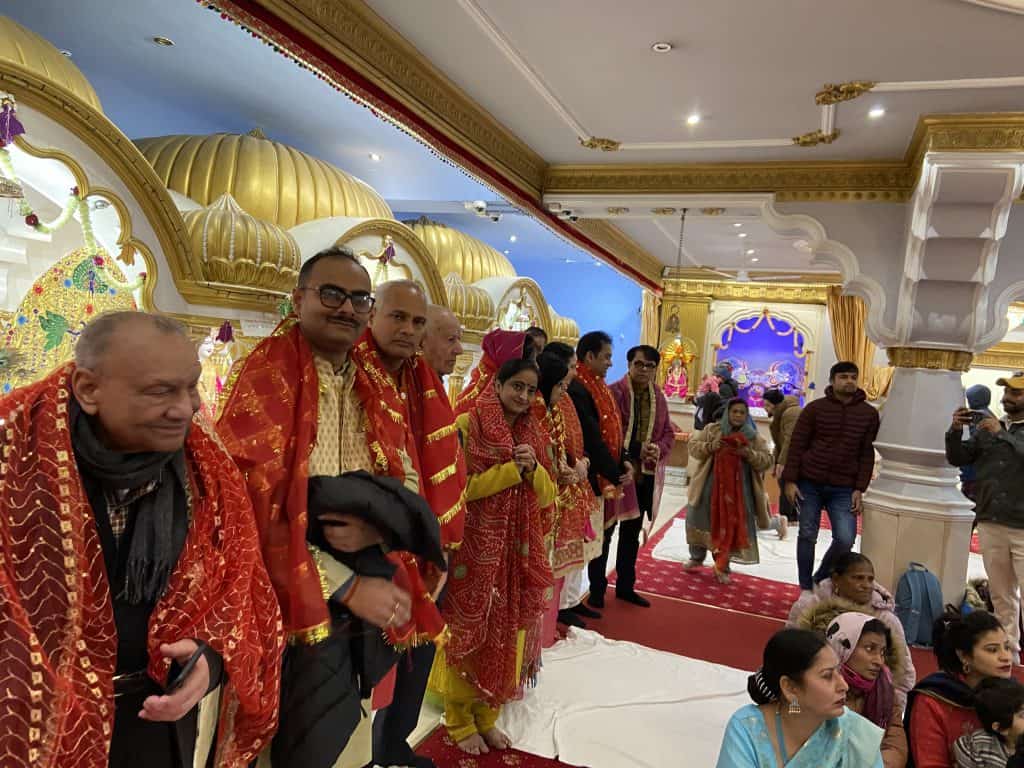By Amardeep Bassey
On a huge expanse of land in a small town in northern India, prime minister Narendra Modi finally realised his long-standing aspiration, a sprawling temple complex dedicated to the Hindu deity-king Ram.
It has, however, fuelled further discord between the country’s Hindu majority and Muslim minority.
Modi inaugurated the Ram Mandir on 22 January in a grand ceremony attended by thousands and broadcast to millions across the nation. “Our Lord Ram has arrived after centuries of wait,” Modi said.
Sharad Sharma of Vishva Hindu Parishad (VHP), a right-wing Hindu group and a member of the Hindu trust behind the temple, said the Ayodhya complex was “our Vatican City, the holiest site for Hindus worldwide”.
He added: “After 500 years of Hindu oppression, Lord Ram will finally be returned to Ayodhya.”
Modi, who leads the Hindu nationalist Bharatiya Janata party (BJP), marked the occasion with 11 days of “strict vows and sacrifice” in preparation and has declared that he is an instrument chosen by God to be the “representative of all Indians”. Indian elections are due in April and May this year.
Opposition leaders have called the inauguration a political gimmick. Some senior Hindu priests also boycotted the event, citing concerns that consecrating an unfinished temple — Ram Mandir is only half-built — contradicted scripture.
Some leaders from the Congress party, India’s main opposition, also boycotted the event, accusing Modi of exploiting the temple for political points.
Ayodhya’s significance
The temple site, believed by devotees to be Ram’s birthplace, holds immense cultural and religious importance for Hindus.
Ram, the seventh avatar of Vishnu, is a major deity in Hinduism, symbolising virtues of truth, sacrifice, and ethical governance. Key Hindu festivals, such as Dussehra and Diwali, revolve around mythological tales of Ram.
Ram’s life story is told in the Ramayana, known as an epic story, which details the kidnap of his consort Sita, whom Ram rescues from the clutches of the demon Ravana.
The Ram Mandir’s inauguration marks a crucial point in the complex history of the site.
Many right-wing Hindu activists argue that the Babri Masjid, a mosque that preceded the temple, was constructed by India’s Mughal ruler Babur in 1528 as an affront to Hinduism.
Discord over the site has fuelled tensions between India’s Hindu and Muslim communities, with critics viewing the government’s alignment with the temple as a move away from the country’s post-independence secular ideals.
During colonial rule, the British kept the site divided. They permitted Muslim worshipers to pray inside the mosque and Hindus to worship outside.
In 1949, two years after India gained independence, Hindu activists broke into the mosque and placed an idol of Ram inside.
The Indian government locked the main gate and shut the mosque permanently — until 1986. Hindu nationalists launched a campaign to build a temple to Ram there.
On 6 December 1992, Hindu mobs demolished much of the Babri Masjid. The mosque’s destruction led to nationwide riots in which 2,000 people, mainly Muslims, died.
In 2010, a court awarded Hindu petitioners a portion of the site and in 2019 the Supreme Court called the mosque’s destruction “an egregious violation” of the law but handed over the entire site to a trust for the Hindu temple construction.
The construction of the three-storey pink sandstone temple, costing an estimated £170 million, spans nearly 3 hectares (7.4 acres). It features intricate carvings and 46 doors, 42 of them adorned with gold.
A dark stone sculpture of Ram was installed for the consecration, and the temple is expected to draw an estimated 100,000 visitors daily.
Donations for the temple, which will become the world’s third-largest, have surpassed 4 trillion rupees (£38 billion). Gifts to the temple have poured in, including a 33-metre incense stick made of 1,470kg of cow dung, 190kg of ghee and 420kg of herbs. It is expected to burn for at least six weeks.
Muslims in Ayodhya, however, still await their new mosque. The state government allocated a plot, 25km away, for Muslims to build a replacement mosque, but work has not yet begun. The site is surrounded by roads and fields and far from most Muslim worshippers.
British celebrations
Hindus in the UK have been marking the Ram Mandir temple’s inauguration, with the biggest celebrations carried out by the Gujarati community. The Indian state of Gujarat is Modi’s homeland and many of the Hindu temples in Britain are sympathetic to his nationalistic stance.
At the Vishwa Hindu Temple in Southall, west London, thousands of worshippers have joined a days-long celebration that included the continuous reading of the Ramayana.
Rajnish Kashyap, the temple’s general secretary, who is also spokesman for the Hindu Council UK, said Hindus had been waiting for this moment for a long time.
He said: “Ram is not an imaginary being. He is our cousin, our past present and future. Ram plus Ayodhya is India in a nutshell.” Thousands of worshippers and some local MPs, he said, had lit small lamps, 1,001 in total, to commemorate the opening.
Meanwhile some members of the Indian community organised a 325-car rally in London to mark the inauguration. It started from The City Pavilion in Collier Road, west London, and travelled to east London and back, the participants chanting slogans in praise of Ram.
Further reading
Al Jazeera explainer
Ayodhya dispute explainer
RMC Hinduism factsheet

















